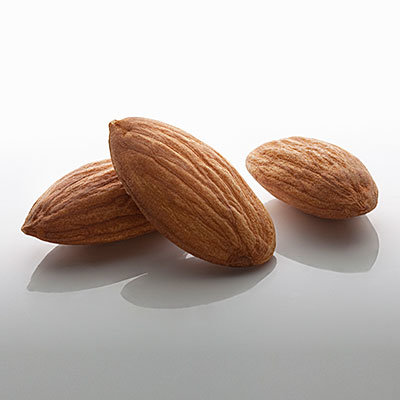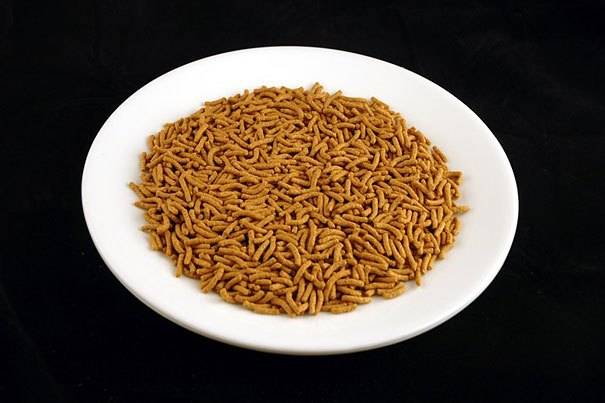Calories - Breaking Them Down
A calorie is not some abstract measurement made up by dieters, or are they assigned by the U.S.D.A. It is a unit of heat. Traditionally it is defined as the amount of heat required to raise the temperature of 1 gram (g) of water 1 degree Celsius. Nowadays though it appears as though we have two classes of calories. One I’ll call scientific, just defined above, and the other is known as a food calorie. We will still just call them calories though. Again calories are a measurement of heat. Heat is a form of energy, and gets transferred between two object of differing temperatures. This transfer of energy has the ability to produce work. You reading this article, drinking your coffee, tapping your foot, this all requires you to do work, to transfer energy, to consume calories.
A calorie is a calorie is a calorie. As a unit of measurement. Food calories are slightly different. How they are stored, used, and processed vary. A gram of protein, or carbohydrates, has about 4 calories. A gram of fat? About 9 calories! Therefore you could eat twice as much protein or carbohydrates as you could fat for the same amount of calories. Your body has to work with varying levels of the energy required in order to access, breakdown, and use a nutrient depending on if it came from a protein, a fat, or a carbohydrate. It takes more energy to utilize the stored energy in a gram of protein than it does to use a gram of carbohydrate or fat. Also, it takes more energy to use a carbohydrate than it does a fat. First, you should get an estimate of how many calories per day you should be consuming based upon your lifestyle. Just go to a search engine and start typing in “how many calories per...” and the results will come up. For reference, the government bases their rda’s upon a 2000 calorie per day diet. An average daily number could be anywhere from 1000-5000 calories. Now you may want to break down how much of each class you should, or could, eat. Using the nice, round number of 1000 calories/day, which would probably be too low for the average person, let’s see how much protein, carbohydrate, and fat we should eat. A ratio I found online and the one I like to use is 20/20/60. That is 20% of your intake should come from proteins, another 20% from fats, and 60% from carbohydrates. So 20% of 1000 is 200, so 200 calories should originate from protein. Another 200 calories from fat, and then 600 from carbs. Using the calories per gram numbers of 4/4/9, we can then determine how many grams of each we should be eating daily.
200 calories X 1 gram/4 calories (for protein) = 50g of protein.
200 calories X 1 gram/9 calories (for fat) = 22g of fat.
See how you got to eat less of the fat for the same amount of calories?
I like to make the comparison of a person’s caloric intake to a budget. Think of all the calories you ingest as deposits into your body account. Imagine every activity you do such as breathing, exercising, and singing as withdrawals. At the end of each day, your accountant, or conscience, comes strolling through to balance the books. Usually most people would desire to have a balance of zero, or even better, in the negatives. This would either signify no weight gain or even a loss. If you are positive when the results are tallied, hello excess flab, it’s got to get stored somewhere. In the most basic of terms, if you want to maintain or lose weight, what goes in must be less or equal to what goes out calorie-wise. Makes sense right? So use the figures above to determine how much of which you should consume and then apply those to your budget. This will tell you what you need to eat or not eat in order to gain or lose weight. One way to assist your body to have a calorie deficit, is by making it have to expend more energy just in order to maintain it.
If it takes more energy to utilize a gram of protein than it does fat, doesn’t it follow logically then that it would also require more energy simply to maintain it? To have protein available in this manner probably means you are a fit person and have some lean body muscle mass. By having an increased lean muscle mass, you are burning more energy, your metabolic rate is higher. This condition as you can see sort of feeds itself, kind of a symbiotic relationship maybe, they both benefit from one another. For example, as a result your body will have to take in and convert more oxygen in order to supply those muscles, your skeletal muscles have to work harder trying to keep your structure erect. The most straightforward method of increasing your lean muscle mass is by lifting weights. A way to multiply the amount of your strength gains is to supplement using creatine. Creatine helps by increasing the amount of an energy producing compound called ATP that you have stored in your cells. It does not build muscle by itself but coupled with a strength or exercise program, it surely will.
You should now be able to receive an engineering degree with your knowledge of the definition of a calorie. It is a unit of heat, processed during a transfer of energy. Calories or keeping track of them, could be compared to maintaining a budget. Goes in must equal or be less than what goes out, otherwise you’ll be adding on the pounds. A sneaky way to increase or maintain a high metabolic rate, also known as burning more calories just to exist, is to add to your lean muscle mass. Of course you would do this naturally through exercise and healthy eating. Taking creatine during this process would make you notice the gains faster as it allows you to use more energy during hig output activities. I hope you have found this article informative.
-
Nutrition and Exercise are Key to Fitness
When it comes to living a long and healthy life, there are two nece
-
Fitness Infos - Weight Loss Cleanse
Are you interested in losing weight? If you are, have you heard of we
-
Who Wants To Know The Truth About Weight Loss Fat Loss And Metabolism
?Who Wants To Know The Truth About Weight Loss, Fat Loss And Metabolis
-
Obsession With Food — and Other Reasons Why Diets Don’t Work
Counting calories, ordering special diet meals, measuring out porti
-
Quick Guide To Diet Pills Facts
It seems like there are a variety of diet pills on the market today, b
-
Changing Eating Habits to Lose Weight
Even if you are doing all the right exercises and all is perfect from
- DON'T MISS
- You Can Slash Calories With These Techniques
- Another New Year Another Resolution To Lose Weight
- The Lazy Way To Fitness
- Whats the Best Exercise to Burn Fat Quickly? Discover Interval Training: Melt Your Fat Away inOnly 20 Minutes x 3 Times per Week
- Steps To Get Fit
- Losing Weight In This Modern World
- Losing Weight Is All About What You Gain
- Here Are A Few Ideas To Help You Lose The Fat Youre Looking To Lose
- Small Changes To Weight Loss
- Rapid fat loss techniques!




